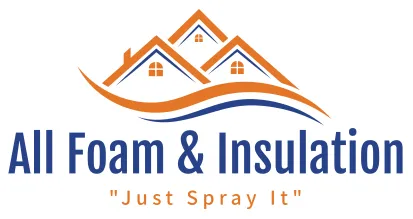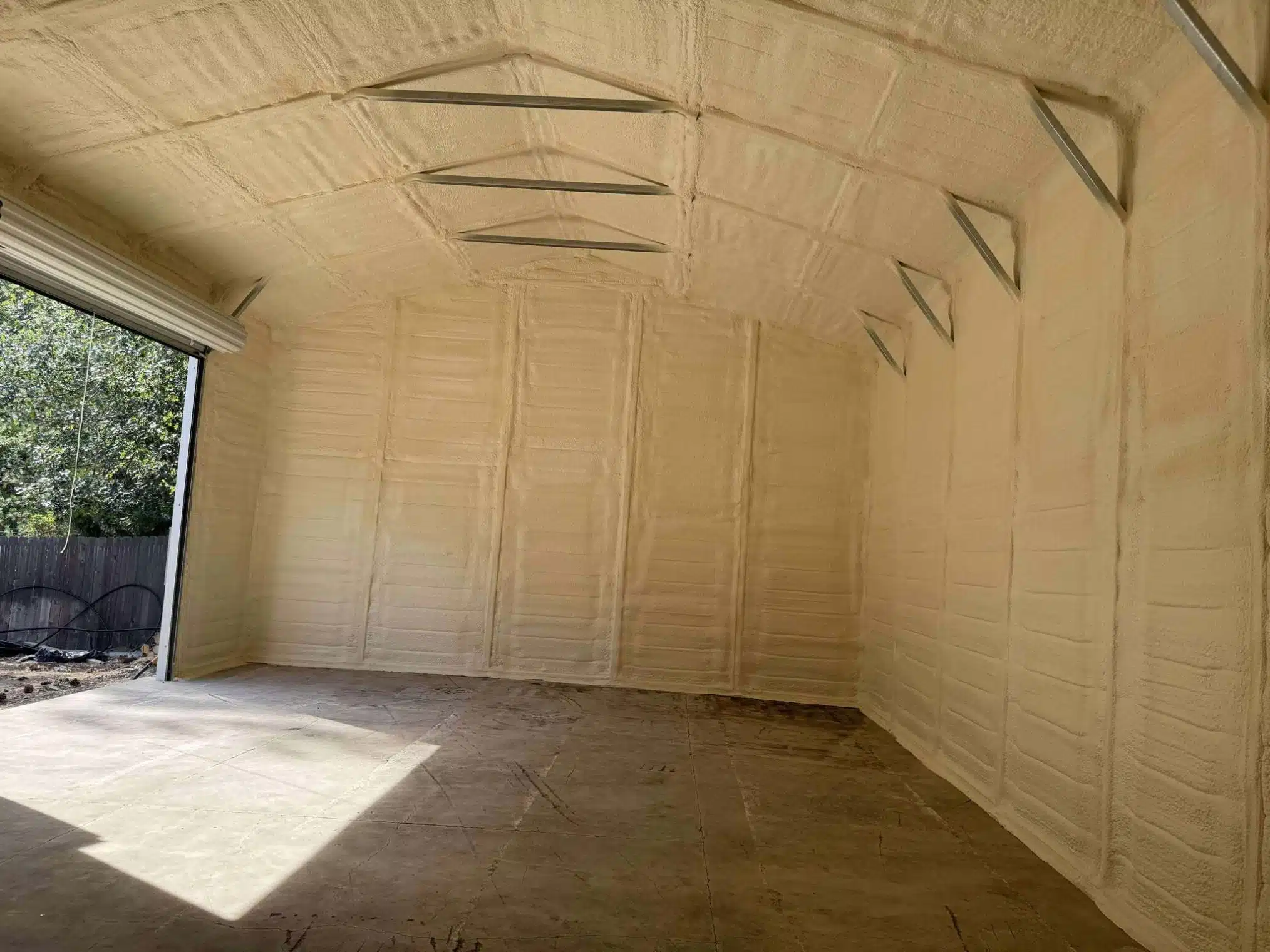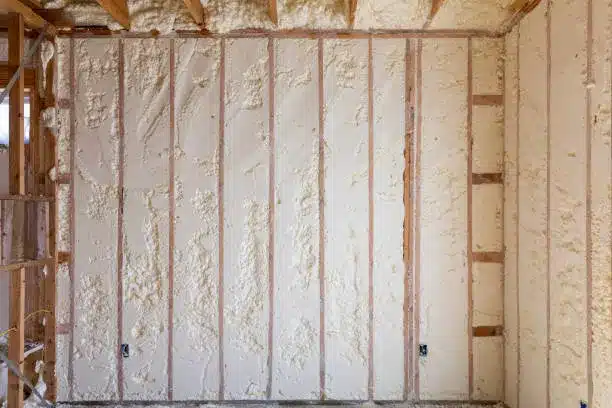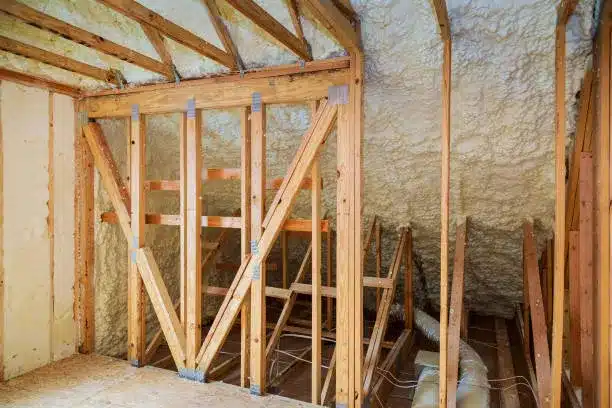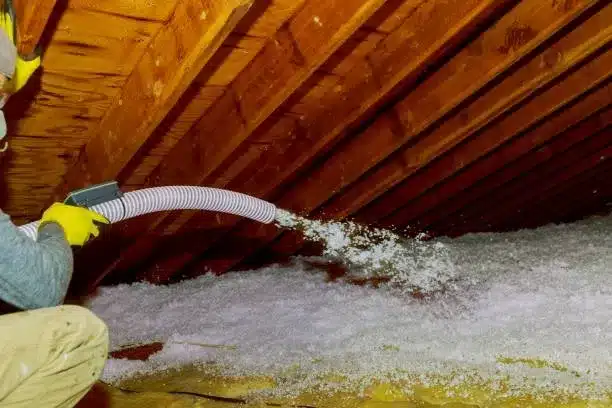Spray foam insulation works through a chemical reaction that causes two liquid components to mix and expand rapidly into a foam that seals every crack and crevice. To understand this expansion fully, this article breaks down the science behind it, from the basic chemistry to real-world applications. Readers will gain a clear understanding of how this material performs in homes and buildings. Information here draws from hands-on work with insulation projects across various structures, ensuring reliable details backed by tested practices.
Chemical Makeup Behind the Foam
Spray foam insulation relies on polyurethane, a polymer formed from two main parts: isocyanates and polyols. These liquids stay separate in the spray can until application. When a technician sprays them onto a surface, the two mix at the nozzle. A reaction kicks off right away, producing carbon dioxide gas that builds pressure inside the mixture.
That gas creates tiny bubbles as the foam cures and hardens. Open-cell foam uses water as a blowing agent, which reacts with isocyanates to form the gas and leaves a softer structure. Closed-cell foam, on the other hand, uses hydrocarbons like pentane for denser expansion. Both types expand to fill spaces, but closed-cell reaches higher densities for better structural support.
Bonus Tip: In humid environments, open-cell foam performs well because it allows some vapor to pass through, reducing trapped moisture risks.
Step-by-Step Expansion Mechanism
The expansion happens in distinct phases. First, the liquids mix and heat up from the exothermic reaction, reaching temperatures around 200 degrees Fahrenheit. This heat speeds up the gas release. Bubbles form and push against each other, causing the foam to swell.
Within 10 to 20 seconds, the material reaches full expansion and begins to solidify. The outer skin cures first, trapping the gas inside for insulation value. Full curing takes a few hours, during which the foam adheres firmly to surfaces like wood, metal, or concrete.
This efficient sealing from the expansion process, as explained in a report from the U.S. Department of Energy, helps seal gaps better than traditional materials, cutting energy loss by up to 50% in attics.
How Expansion Seals Every Nook
The key to gap-filling lies in the foam’s ability to conform to irregular shapes. As it expands, the material flows into tiny cracks before setting. This adhesion prevents settling or shrinkage over time, unlike batt insulation that leaves voids.
In practice, this means even hard-to-reach spots around pipes, wires, or rim joists get covered completely. The expansion ratio ensures minimal waste, as the foam only grows where applied. Data from the Spray Polyurethane Foam Alliance shows that properly installed spray foam reduces air infiltration by 75% compared to fiberglass. This practical benefit contributes to the industry’s growth, as the global spray foam insulation market hit $1.2 billion in 2022, driven by demand for energy-efficient building solutions.
Types of Spray Foam and Their Expansion Differences
Different foams expand at varying rates and densities, affecting their use cases.
| Foam Type | Expansion Ratio | Density (lbs/ft³) | Best For |
|---|---|---|---|
| Open-Cell | 100:1 | 0.5 | Soundproofing and attics in mild climates |
| Closed-Cell | 30:1 | 2.0 | Basements and exterior walls in cold areas |
| Medium-Density Closed-Cell | 25:1 | 1.8 | Roofs and marine applications |
This table highlights how expansion ratios determine filling power. Open-cell spreads wider for coverage, while closed-cell packs tighter for strength.
When selecting a type, consider the Bonus Tip: Test small areas first in uneven surfaces to observe expansion without over-application.
Performance in Various Climates
Climate plays a big role in how spray foam expands and lasts. In cold regions like the Pacific Northwest, closed-cell foam resists moisture intrusion during wet winters, maintaining its seal. Expansion happens uniformly regardless of temperature, but applicators adjust pressure for extreme cold to ensure even mixing below 50 degrees Fahrenheit.
In hotter, humid areas, open-cell foam breathes better, preventing mold from trapped condensation. A study by Oak Ridge National Laboratory found that spray foam in southern U.S. homes cuts cooling costs by 20% through superior sealing.
Regional note: In coastal regions like Oregon, where rain and fog dominate, combining foam types in walls and roofs optimizes performance against damp air, serving as a representative example for similar environments.
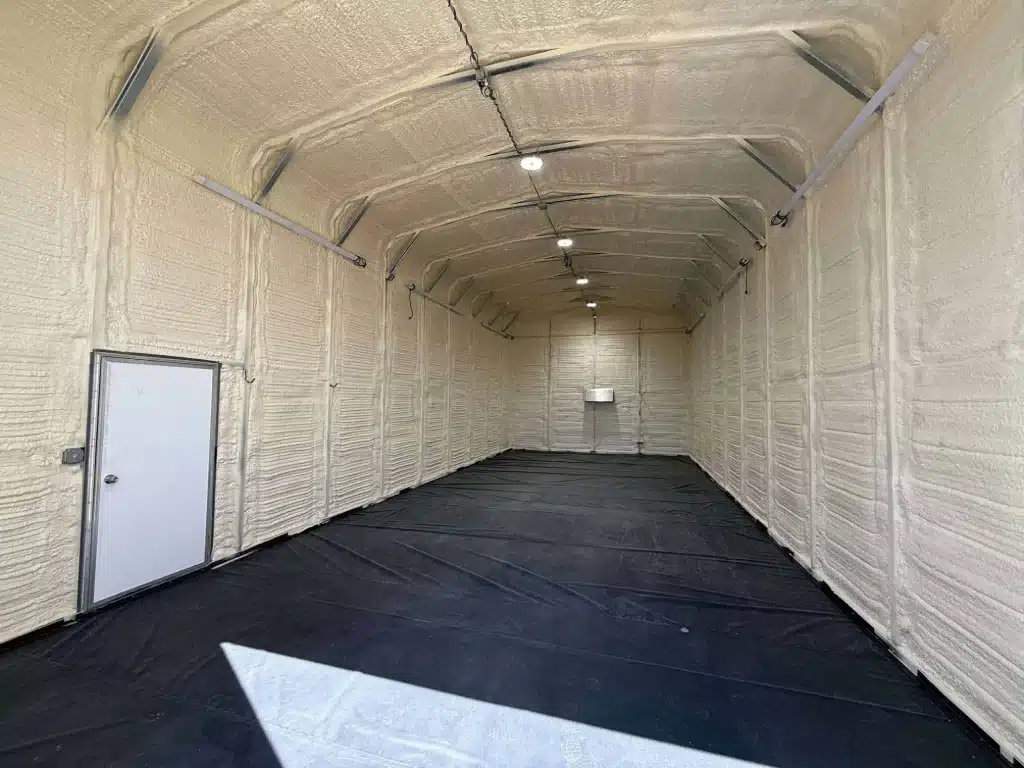
Things to Consider Before Making a Decision
Start by assessing the building’s age and current insulation. Older structures may need removal of old materials to avoid compression during expansion. Next, check for ventilation issues, as poor airflow can affect curing.
Then, budget for professional application, since DIY kits limit control over mix ratios and even coverage. Also, evaluate R-value needs based on local codes; closed-cell offers higher values per inch. Finally, review environmental impact, as some foams use low-GWP blowing agents to meet regulations.
Bonus Tip: Measure moisture levels in walls before installation to prevent reactions with wet surfaces that could weaken bonds.
Common Questions
Is Spray Foam Insulation Safe During and After Expansion?
Homeowners often wonder about safety during expansion. The process releases minimal off-gassing once cured, but applicators use protective gear to handle fresh spray.
How Long Does Spray Foam Insulation Last?
Another concern involves longevity. Quality installations last 25 to 80 years without degrading, depending on exposure to UV or water.
What Does Spray Foam Expansion Sound Like?
Expansion noise surprises some; it sounds like a quick hiss, but settles fast.
Key Points on Spray Foam Expansion
Spray foam’s chemical reaction drives quick, thorough gap-filling for better energy savings and comfort. Understanding the process helps in choosing the right type for specific needs. Evaluate building conditions, climate, and long-term efficiency to decide on the best approach. Consider consulting experts familiar with local requirements to align with personal goals.
Ready to Learn More About Insulation Options
Contact All Foam & Insulation, LLC for detailed advice on spray foam applications. Reach out via email at [email protected] or call (541) 826-9600 to discuss project specifics and get tailored recommendations. This step ensures choices fit exact requirements without common pitfalls.
Questions Homeowners Often Ask
Does spray foam expand too much and cause structural damage?
No, when applied correctly, the expansion stays within designed limits and adds support rather than harm. Over-pressurization risks exist only with faulty equipment.
How fast does the expansion happen, and can it be controlled?
Expansion completes in under a minute, with applicators controlling it by spray pattern and layer thickness to match surface needs.
Is spray foam safe for homes with allergies?
Cured foam emits no volatile compounds, making it suitable for sensitive individuals. Choose low-VOC options for extra caution.
Can expansion fill gaps in existing walls without removal?
Yes, injected foam expands to fill cavities, but inspections confirm space availability to avoid bulging.
What happens if temperatures drop during application?
Foam still expands, but slower mixing requires warmer components. Delays curing, so plan for indoor work in winter.
Sources
- U.S. Department of Energy – Government resource on insulation types and performance benefits.
- Spray Polyurethane Foam Alliance – Industry association providing data on air sealing and installation standards.
- Oak Ridge National Laboratory – Research lab study evaluating insulation effects on energy costs in different regions.

